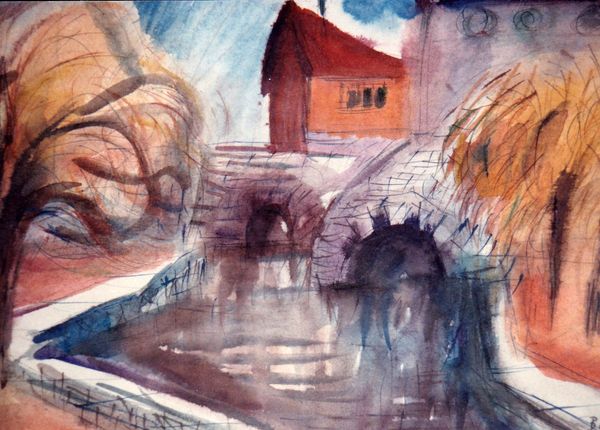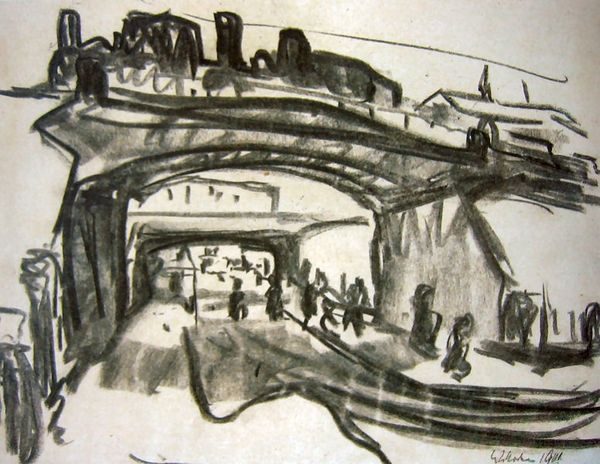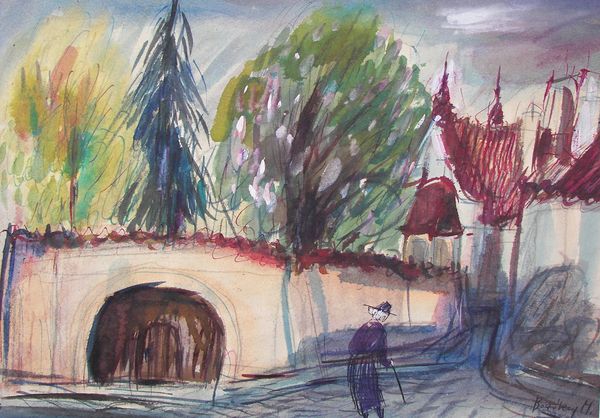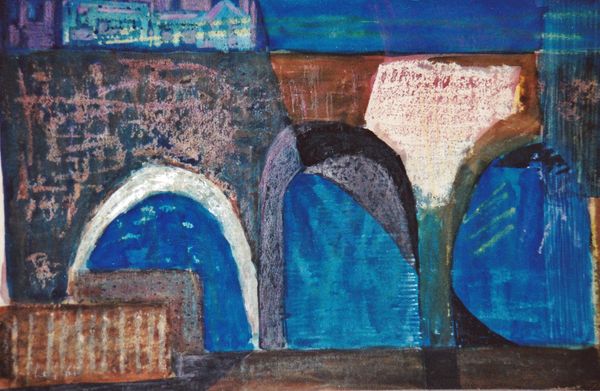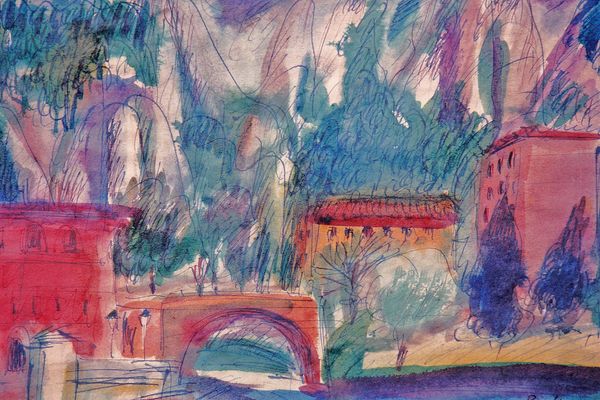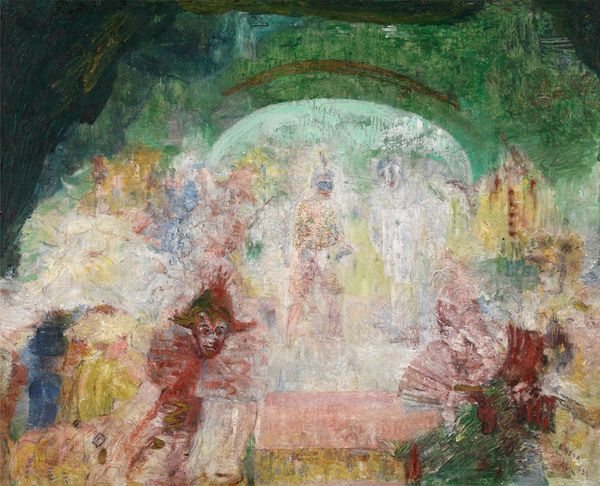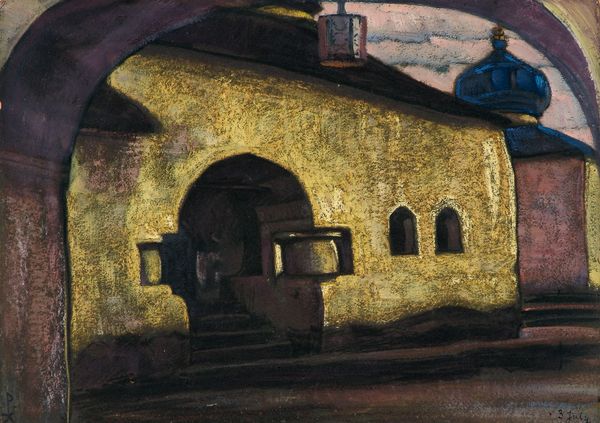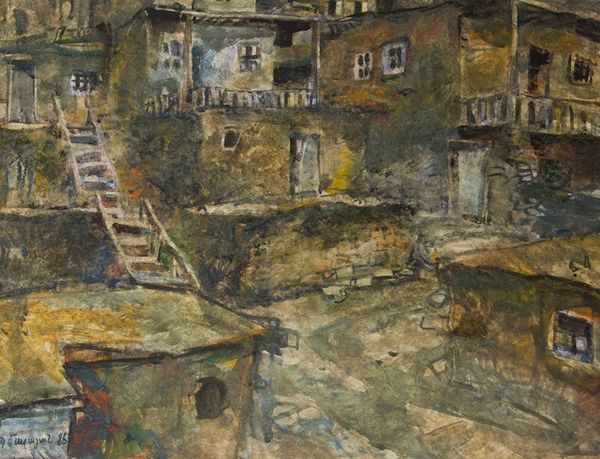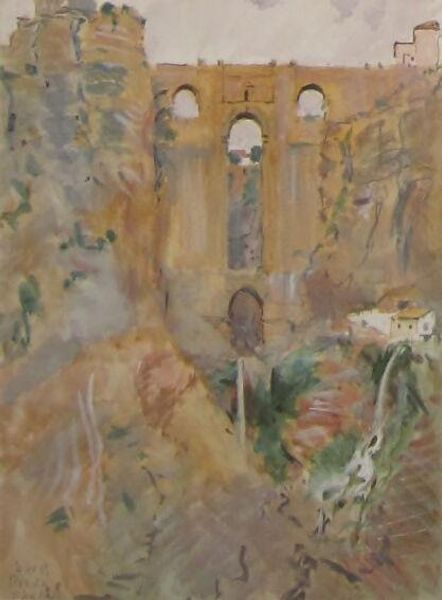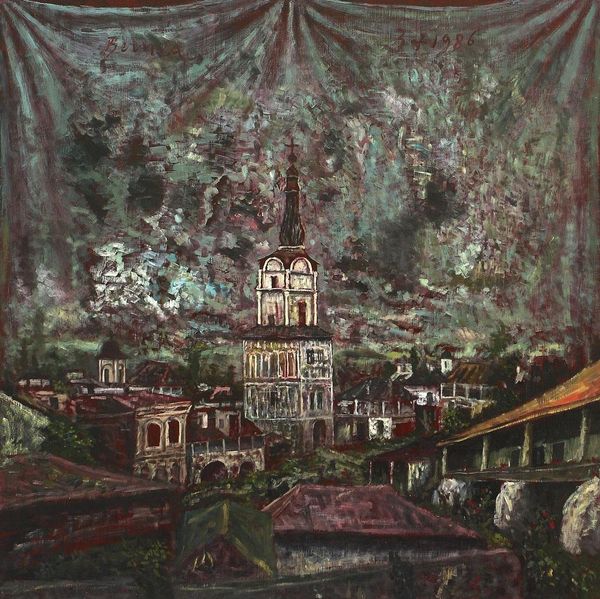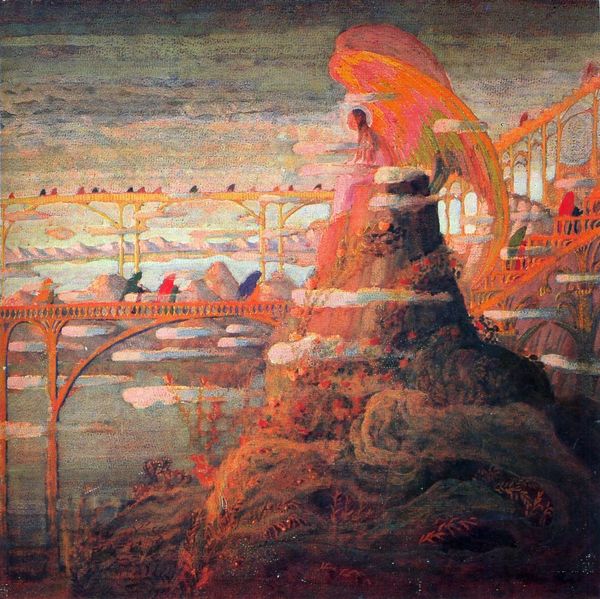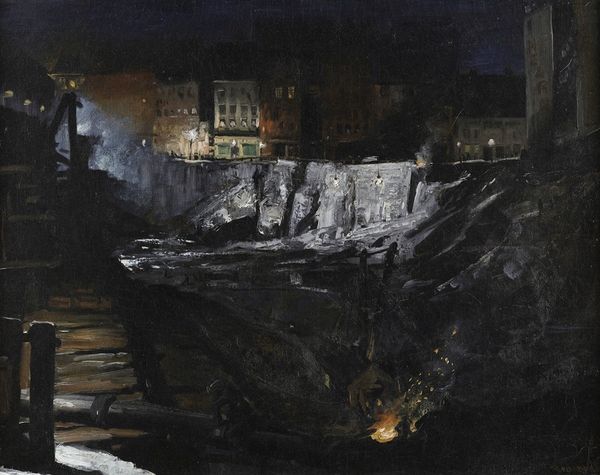
#
abstract expressionism
#
abstract painting
#
impressionist painting style
#
impressionist landscape
#
possibly oil pastel
#
oil painting
#
fluid art
#
acrylic on canvas
#
underpainting
#
painting painterly
Copyright: Public domain
Editor: So, here we have Lesser Ury’s “Train station Nollendorfplatz at night,” painted in 1925. The mood, at least to me, feels so solitary, almost haunted, even with the figures present. What strikes you when you look at this piece? Curator: Haunted, you say? Yes, I see that. It’s a wonderful descent into the velvet cloak of night. Think of Berlin in the '20s – a beacon of progress, a hive of hidden desires. Ury captures the loneliness amid the crowd, that poignant ache of modernity. Look at how the light struggles against the encroaching darkness, those brief, blurry figures. It is more the feeling of a city than its portrait. What does the painting tell *you* about movement, about journey? Editor: Well, there is a lot of implied movement in this painting: the trains, the figures, and, of course, all this gorgeous light bouncing off the dark sky. I’m not sure if I’m imagining this, but it looks like the dark areas sort of move into the light, or the other way around. Curator: Exactly. You know, this piece speaks volumes about Ury himself, who wandered, virtually unknown for years, through Berlin night streets. Like these brushstrokes of his, he yearned to leave a mark. This might be why he opted for this impressionistic, fleeting aesthetic—he was interested in grasping those sensations that time inevitably transforms. Editor: That’s a great perspective; seeing it connected to the painter’s life makes it far more expressive and, dare I say, personal. Curator: Personal, precisely. I hope our visitors also have such a profound exchange.
Comments
No comments
Be the first to comment and join the conversation on the ultimate creative platform.
